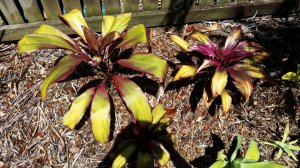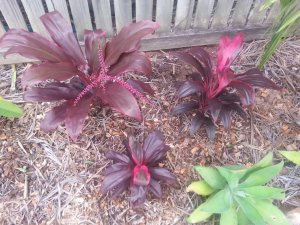Mezo
Member
- 12
- 03/08/15
- 0
- 21
Hi guys, just wondering if anyone could shed some light on what's wrong with my Cordylines (sorry, can't remember exact species).
I bought these plants this past autumn (it's now early spring here). I originally thought the discolouring/yellowing of the leaves might have just been a side effect of a few cold nights this winter (down to about 5c/40f at night for a week or so at a time during the worst of it). But, now I'm not so sure as the bigger plant of the three looks like it has the same problem on the new growth.
They are in full direct sunlight from late morning until about 4 pm everday. Could it be sunburn? Or something else? I'd just like to know the best course of action to get them looking good again.

For reference, here's a photo from about 5 months ago when they were looking healthy.

I bought these plants this past autumn (it's now early spring here). I originally thought the discolouring/yellowing of the leaves might have just been a side effect of a few cold nights this winter (down to about 5c/40f at night for a week or so at a time during the worst of it). But, now I'm not so sure as the bigger plant of the three looks like it has the same problem on the new growth.
They are in full direct sunlight from late morning until about 4 pm everday. Could it be sunburn? Or something else? I'd just like to know the best course of action to get them looking good again.

For reference, here's a photo from about 5 months ago when they were looking healthy.

